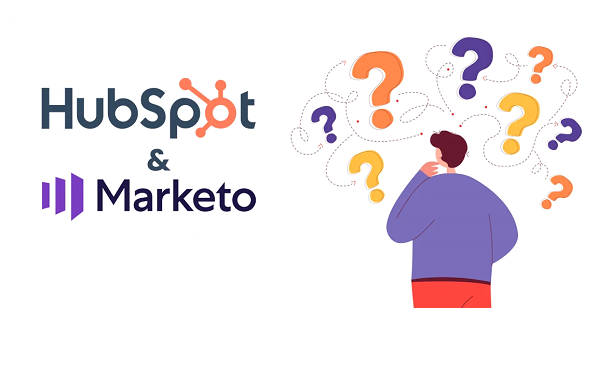Marketing automation software takes the heavy lifting out of managing email campaigns, lead tracking, and data analysis. Among the most commonly used online marketing automation software options available today is HubSpot and Marketo, each with a many features. The hard part here is that of picking out which best suits your business.
While HubSpot and Marketo are generally similar in capability, they both appeal to different teams and marketing needs. This comparison will walk you through which of these systems is better compared to the other and which one will meet your requirements and budget.
Table of Contents
ToggleComparing HubSpot and Marketo
Effective task management requires the need for choosing an apt marketing automation software. Both HubSpot and Marketo are great applications, but they meet the need for business operations in different ways.
The right marketing strategy works when you choose a marketing automation tool according to the goals of your business, team size, and marketing complexity. Now, let’s break down the main features of both the top online marketing automation software systems so that you can get the right one for your business.
Effective Lead Management
HubSpot: HubSpot does a fantastic job of making lead generation simple and easy to the doorstep. It provides tools like landing page and form builders, both of which are very easy to use. The automated email marketing you can configure personalized campaigns. A/B testing also helps improve your content, besides basically scoring leads to rank prospects based on the level at which they interact.
Marketo: Marketo is suitable for the firms which may require a tad more complexity in lead nurturing. It is beyond simple email marketing; it sends content dynamically based on how users interact. Marketo’s personalized email sequences and multi-channel lead scoring allow you to target leads more effectively, tracking how users interact across different channels.
CRM System Compatibility
HubSpot: HubSpot boasts its own built-in CRM that integrates perfectly well with the marketing tool. This simplifies customer data management, coordination among the teams, and updating the CRM database.
Marketo: Marketo does not have an in-built CRM but supports the integration of various CRM systems via APIs. On the other hand, the configurations for integrating multiple platforms might be more complex, and data sync management can become quite complicated for a business without any technical competence.
Insightful Reporting and Analytics.
HubSpot: The analytics tools in HubSpot are intuitive enough that anyone can use them. Dashboards come with a certain level of clarity into your campaigns through visual insights into the areas which are good and where you are going wrong. This is why it is a great tool for teams that need actionability with data without having deep technical skills.
Marketo: Marketo analytics and reporting tools are more in-depth, such as reports on everything that has been going on in your campaign. It features attribution modeling and advanced reporting, which enable marketers to go very deep into performance data so that campaigns could be optimized through actual precision.
Advanced Automation Features
HubSpot: The automation features at HubSpot are very simple but effective. It has a drag-and-drop workflow builder that makes it easy to automate things such as email triggers and social media posts, which is great for smaller teams with low-complexity campaigns.
Marketo: Market has much more sophisticated automation capabilities. That is, with complex workflows and branching logic, API integrations, and custom triggers you can create quite tailored experiences for different audiences. Marketo is built for high-complexity campaigns and the need for dynamic personalization for different audiences.
User Experience and Accessibility
HubSpot: Also, HubSpot is easily known for a user-friendly interface. The tools in HubSpot are designed to be intuitive, allowing marketers who are not technically advanced to use the solutions with ease. This aspect makes HubSpot ideal for business organizations wanting rapid and easy setup and adoption.
Marketo: Marketo provides a more elaborated interface due to its feature rich capability. It requires technical expertise to successfully operate and therefore works best with companies that either in-house technical teams to support them or those willing to invest in the necessary learning.
Pricing
HubSpot: All features of HubSpot are available in one unified platform, providing you with a one-stop shop for managing customer relations. As your company grows, you can upgrade your plan and add whatever other features you might need to propel your marketing efforts or reporting capabilities.
HubSpot offers a “pay as you go” service, where users can access all the features at any level and can upgrade the whole package instead of individual tools. It is structured around the number of users, features, and contacts, which makes it very budget-friendly for smaller to mid-sized businesses.
⦁ Starter: Priced at $45 per month (available yearly or monthly), this plan provides essential tools such as email marketing, forms, and landing pages.
⦁ Pro: At $800 per month (billed yearly), this package includes CRM functionalities, marketing automation, and lead scoring.
⦁ Enterprise: For $3,600 per month (billed yearly), this plan offers advanced options such as revenue tracking, custom reporting, and predictive lead scoring.
Marketo: Marketo follows a more complex pricing model, with separate modules and user categories, making it more appropriate for larger companies with higher budgets. Marketo includes seven core modules, such as e-mail marketing, account-based marketing, and lead management.
You can choose to buy individual modules or bundle them together, allowing for customization based on business needs. However, some companies may prefer a more unified solution. Marketo’s pricing tiers include Select, Prime, Ultimate, and Enterprise—designed for businesses of varying sizes.
⦁ Starter: For $1,450 per month (billed yearly), this plan covers essential e-mail marketing and automation features.
⦁ Pro: At $3,000 per month (billed yearly), this plan includes advanced automation, lead nurturing, and detailed reporting.
⦁ Elite: Priced at $8,000 per month (billed yearly), this package is tailored for large-scale operations, offering multi-channel marketing and customizable reports.
Actual prices depend on the number of users, features, and add-ons. Both offer free trials to give you the opportunity to test all the features before committing.
Conclusion
The deciding factor between HubSpot and Marketo would rely heavily on your business’s needs and size, as well as budget size. Therefore, best for small teams and a business looking for easy, one-stop integration along with user-friendly automation. Market, however, is more for large organizations with complicated methods of marketing because it has highly advanced personalization and dynamic workflow. Both powers online marketing automation software, but HubSpot takes down its approach to simplicity, whereas Marketo shines with high-dimensional personalization and scalability for high-demand campaigns.
Read About: The Flutterwave Scandal.















